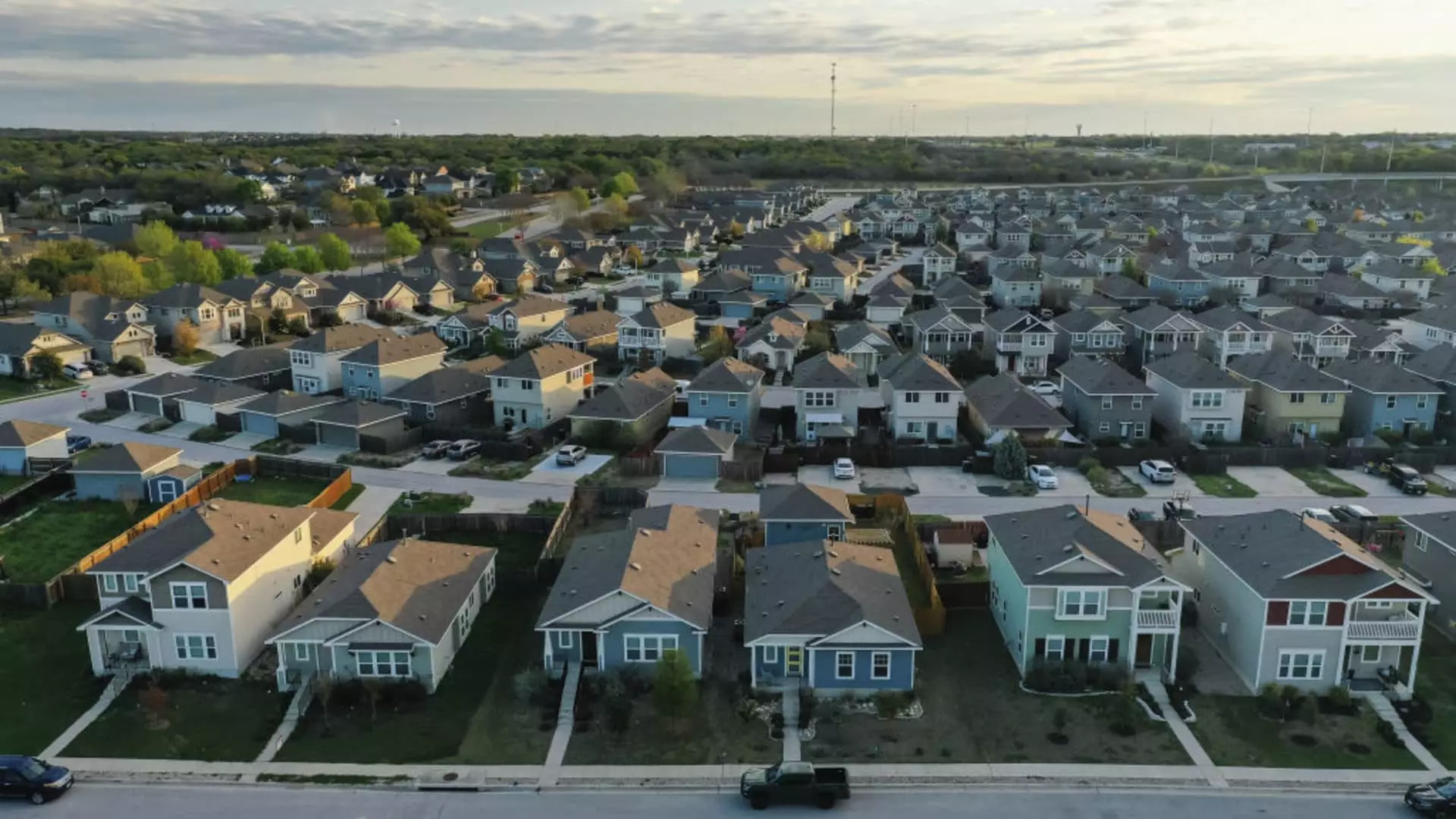In a surprising turn of events, mortgage demand experienced a slight uptick last week, despite continuing increases in mortgage rates. According to data from the Mortgage Bankers Association (MBA), total application volume recorded a 1.7% increase compared to the previous week. This rise occurred even as the average interest rate for 30-year fixed-rate mortgages, which cap at conforming loan balances of $766,550, climbed to 6.90%, up from 6.86%. The increase in rates accompanies a rise in points charged on these loans, suggesting a market that is grappling with higher costs for borrowers.
Such a scenario raises essential questions about the resilience of potential homebuyers in the face of escalating mortgage expenses. The MBA highlights that while the purchase applications increased by 2% for the week, they still lagged 1% behind figures from the same week last year, indicating a mixed bag in housing market activity. Furthermore, the recent demand spike is likely attributed to a slight loosening in for-sale inventory and a decrease in FHA rates, providing a temporary relief to buyers.
The Role of FHA and VA Programs
Diving deeper into the figures, applications for FHA loans notably surged by 7%, while demand for VA loans contributed significantly to the overall refinancing applications, which rose by 2% for the week and showcased a remarkable 43% year-over-year increase. This highlights the shift in preferences among buyers, who appear to be favoring government-backed loan options as a more accessible means to navigate the current market conditions.
Joel Kan, an economist at the MBA, mentioned that buyers are attempting to make the most out of the improving supply situation combined with proportionately lower FHA rates. In a housing landscape often dominated by rising prices and interest rates, such shifts in application patterns demonstrate how government programs continue to play a crucial role in facilitating home purchases.
Market Reaction to Geopolitical Events
In a more unpredictable macroeconomic environment, mortgage rates exhibited minimal changes week over week, though they initially rose in response to various geopolitical developments. Following the U.S. authorization for Ukraine to use advanced missile systems against Russia, bond yields experienced volatility in what is often termed a ‘flight to safety’ among investors. Matthew Graham of Mortgage News Daily noted that while rates dipped post-news, the expectation of a significant shift in interest rates remained unfulfilled.
This dichotomy indicates an apprehension among investors following the age-old principle of ‘mutually assured destruction,’ which complicates predictions about interest rate movements in a global context. Thus, while homebuyers may feel encouraged by any transient dips in mortgage rates, the overarching uncertainty stemming from international relations continues to loom over fiscal policies and market trends.
The recent increase in mortgage demand presents a complex picture reflecting both positive and negative undercurrents affecting the housing market. The interplay between rising mortgage rates and increasing applications, supported by government-backed loans, underscores the adaptability of consumers in navigating economic pressures. Investors and potential homebuyers must stay vigilant, as the market continues to react to both domestic conditions and international events, indicating that the path forward for the housing sector remains uncertain yet compelling.

